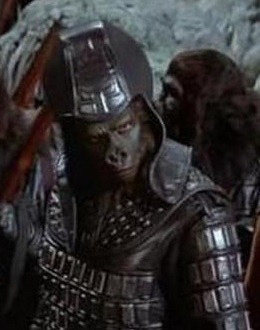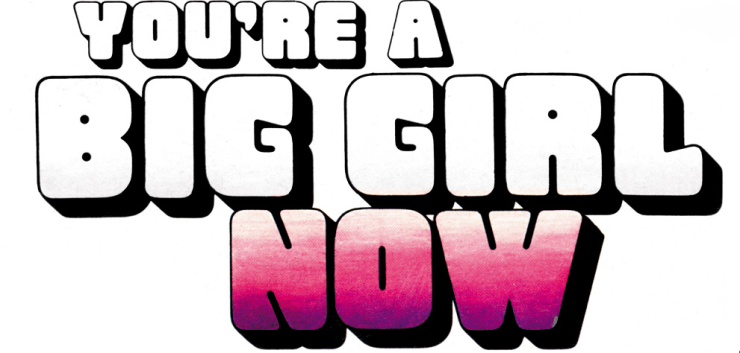
Warren Publishing was an American company founded by James Warren in 1957. It produced magazines such as “Famous Monsters of Filmland,” “Blazing Combat,” and horror-themed lines. In style and substance, Warren’s horror magazines “Creepy,” “Eerie,” and “Vampirella” resembled the EC horror comics published in the 1950s. (For more information on EC, check out my review of “Lost in the Microcosm.”)
EC horror comics fell victim to Dr. Fredric Wertham’s campaign to prevent children from reading so-called objectionable comics and the subsequent creation of the Comics Code Authority. Warren sidestepped the Comics Code by printing sequential art in magazine format, vice comic format. His publications were aimed at an older audience.
Issue number 81 was released in February 1977 and contained seven stories endeavoring to answer why a giant woman is on top of the Empire State Building.

The first, “Goodbye, Bambi Boone,” features the titular character as an actress who grew to enormous size due to breast enlargement surgery that went awry. She struggles to be appreciated for her acting ability and not just for her incredible size. The ending to this tale is sad, but well-told.

The second, the “Taking of Queen Bovine,” involves an unscrupulous spy being sent to a planet inhabited by miniature apes. This was clearly inspired by the “Planet of the Apes” series of films which were released from 1968 until 1973.


The giantess aspect felt tacked on so the connection to overall theme was tenuous. However, I appreciated how the cold-blooded spy was given an honorable conclusion. Although, her cover name, Queen Bovine, seemed simultaneously reductive and inaccurate, as she does not appear to be exceptionally larger-breasted. It’s safe to call her busty, but not more so than many other women.


The third, “The Bride of Congo,” involves a woman who fell in love with a giant ape named Congo. We’re never told why she loves Congo, just that she was “playing hard to get” initially.

After being shot off a building Congo is mortally wounded and (in a rather improbable event) a mad scientist named Professor Wunder takes Congo away from the scene. (Because after a giant monster rampages through town no one would notice its body being taken? That was a big plot contrivance.) The woman, Amy La Bido (yes, that’s her maiden name), volunteers to donate blood to the titanic simian. Amy and Congo just happen to share the same blood type, O-Gargantua, in another plot contrivance. During the blood transfusion, some of Congo’s blood is given to Amy which causes her to grow to enormous size. I won’t give away the ending, but will say it has a happier conclusion than the previous two.



The fourth, “You’re a big girl now,” involves a realistic and horrific perspective on a woman named Rachel who is born larger than normal and grows more than anyone has ever done before. This has the most tragic ending of all the stories. It is also the best written. This comic was partly in color and partly black and white which was jarring at times.

 The premise of the fifth story, “Starchild,” involves a giant woman created to build a city on a future colony. She befriends the local inhabitants and eventually comes into conflict with the representative from Earth sent to check on her progress. This was fine, but nothing too exciting beyond the cool premise of giant humans building cities for normal humans to eventually live in.
The premise of the fifth story, “Starchild,” involves a giant woman created to build a city on a future colony. She befriends the local inhabitants and eventually comes into conflict with the representative from Earth sent to check on her progress. This was fine, but nothing too exciting beyond the cool premise of giant humans building cities for normal humans to eventually live in.



The sixth story, “The Giant Ape Suit,” was rather unique. In this universe King Kong’s rampage was not that of a giant animal, but rather a mech built to resemble a giant ape with the creator inside directing its movements. A criminal steals another one of the creator’s mechs that was made to resemble a former screen star and goes on a crime spree.


The seventh, and final, story was entitled “Golden Girl.” It involves a miniature city made in the image of 1930s New York City. It’s a tale about the greedy daughter of a wealthy businessman who eventually gets her just deserts.

Eerie is a horror themed publication so readers should expect gruesome details. Nonetheless, I recommend folks check out this issue. I consider “You’re a big girl now” as the best story in the lot followed by “Goodbye, Bambi Boone.”
You can find copies of the original issue on eBay. Warren Publishing went out of business in 1983, but Dark Horse Comics eventually bought the rights to re-publish Eerie. Accordingly, you can read this issue in hard copy and digital formats in Dark Horse’s Eerie Archives Volume 17.
This review was written by SolomonG and is protected under copyright law.
All Rights Reserved.

2 thoughts on “A Look Back at Warren Publishing’s “Eerie” issue 81 from 1977”